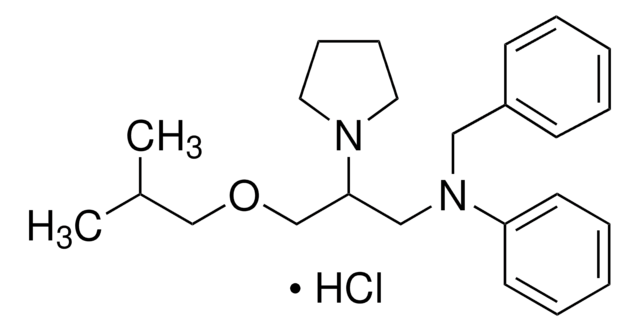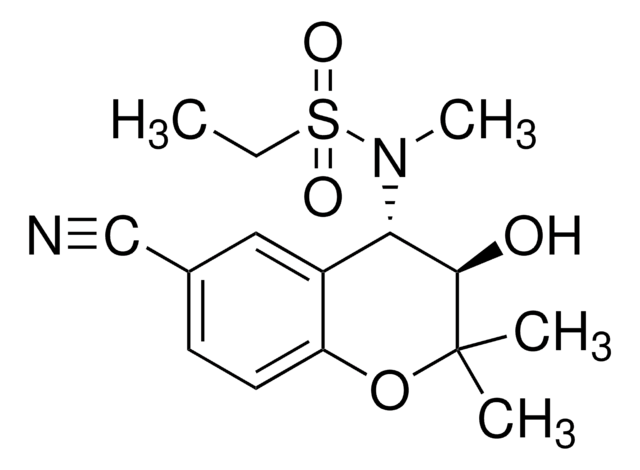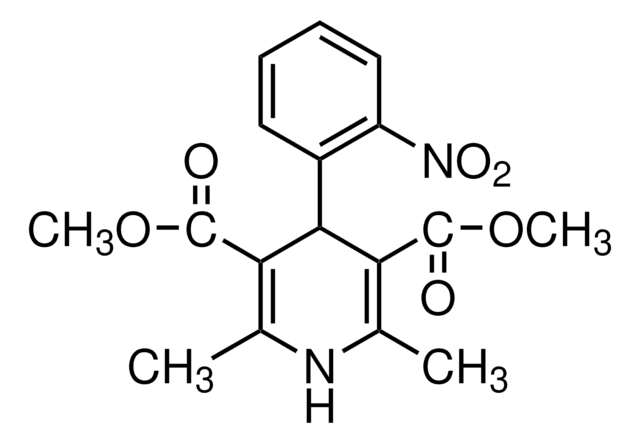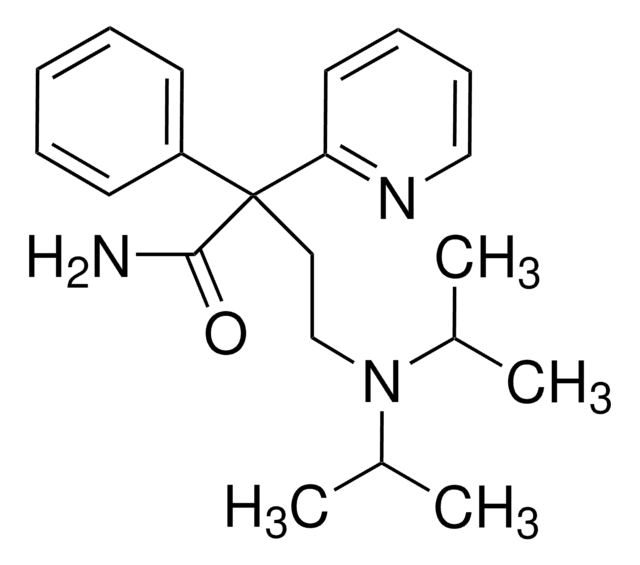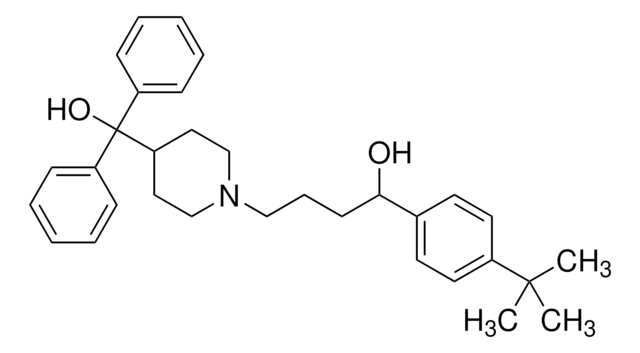SML0353
Azimilide dihydrochloride
≥97% (HPLC)
동의어(들):
1-[[[5-(4-Chlorophenyl)-2-furanyl]methylene]amino]-3-[4-(4-methyl-1-piperazinyl)butyl]-2,4-imidazolidinedione dihydrochloride
About This Item
추천 제품
분석
≥97% (HPLC)
양식
powder
저장 조건
desiccated
색상
white to beige
solubility
DMSO: 1 mg/mL, clear (warmed)
저장 온도
2-8°C
SMILES string
Cl.Cl.CN1CCN(CCCCN2C(=O)CN(\N=C/c3ccc(o3)-c4cccc(Cl)c4)C2=O)CC1
InChI
1S/C23H28ClN5O3.2ClH/c1-26-11-13-27(14-12-26)9-2-3-10-28-22(30)17-29(23(28)31)25-16-20-7-8-21(32-20)18-5-4-6-19(24)15-18;;/h4-8,15-16H,2-3,9-14,17H2,1H3;2*1H/b25-16-;;
InChI key
SUHOTCCGXXEWJN-DSHYBBOZSA-N
애플리케이션
생화학적/생리학적 작용
특징 및 장점
신호어
Danger
유해 및 위험 성명서
Hazard Classifications
Acute Tox. 3 Oral
Storage Class Code
6.1C - Combustible acute toxic Cat.3 / toxic compounds or compounds which causing chronic effects
WGK
WGK 3
Flash Point (°F)
Not applicable
Flash Point (°C)
Not applicable
가장 최신 버전 중 하나를 선택하세요:
문서
Sigma-Aldrich offers many products related to potassium channels for your research needs.
자사의 과학자팀은 생명 과학, 재료 과학, 화학 합성, 크로마토그래피, 분석 및 기타 많은 영역을 포함한 모든 과학 분야에 경험이 있습니다..
고객지원팀으로 연락바랍니다.
